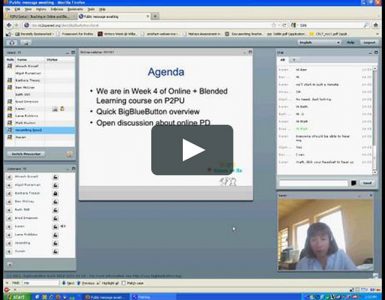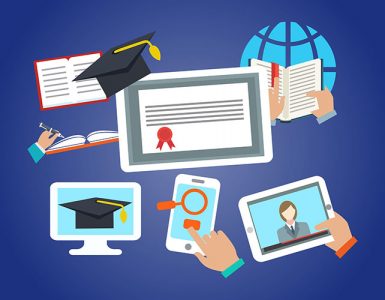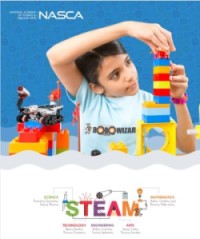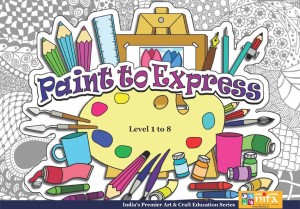How do teachers identify the trends, predict what students will need and prepare them for it— all while the target is continually moving? Today’s students face a technology-infused, innovation-filled world in their future – one that is facilitative as well as demanding. We’re already looking at the possibility of widespread smart houses, autonomous cars and artificial intelligence that can talk to us and work on our behalf. Our parents’ and grandparents’ curriculum won’t be sufficient. Here are ten things you can do today:
- Focus on skill-based learning
Our students are excellent in academic knowledge but fare poorly in soft skills, which enables them to approach problems from multiple angles, communicate effectively or even perform basic ‘adulting’ tasks. Help your students hone their soft skills early on, so they are better prepared for challenges they’re likely to encounter at their workplace. Pedagogical experts around the world are pushing for schools to focus on the four Cs – critical thinking, communication, collaboration and creativity – to help their youth become ‘future-ready’. It would be a good idea to assign one class a week, or ten minutes of each class for skill development. This can be done through group activities, individual assignments, and more.
- Use creativity as a currency
People don’t make decisions based on facts. They act on ideas. While “fact” is derived from the Latin facere, or “do,” “idea” comes to us from the ancient Greek idein, “to see.” Encourage your students to cash in on creativity as a currency. This can be about problem-solving situations with a novel approach or creating images that capture attention and spread ideas. Importantly, provide them opportunities to practise it by getting your students to propose solutions to existing, problematic issues. They can do this through a variety of media (writing, video, physical models, drawing, robotics, AI, etc). Encourage students to try to really capture the attention of their audience with their work. Ideas are the result of applying an interpretive framework to a collection of facts. They guide the audience toward a conclusion.
- Include future-ready skill outcomes
Build future-ready skill outcomes into both summative and formative assessments. To do this, encourage the inclusion of more performance-based assessment items that would require the use of a variety of 21st century skills in context, as well as the development of formative assessment rubrics and checklists that will help teachers “assess student mastery of 21st century skills in ways that impact, inform and improve learning in real time.
- Making sense of information
Google can be a source of amazing information as well as misinformation in the form of fake news and propaganda material. As educators, you have the power to disseminate the information, learn the difference between right and wrong and avoid forwarding information without cross-checking its veracity. While you can’t compete against the information availability, you can guide them on deciphering that information and using it for their betterment instead of falling prey to hateful content.
- Encourage collaboration
A group activity always has more traction in terms of knowledge dissemination. Have students solve problems in groups, then help them reflect on their collaborative process and how it can be improved. Let students share what they’re learning through a class social media account and show them how to effectively and safely interact with the world on the web.
- Help them to spot opportunities
A new idea can spring from any experience – while watching a play, or spotting an article online or even a conversation with a friend. Opportunities can knock anywhere, anytime, and students who learn to find opportunities everywhere can find success waiting for them anywhere. Find ways to incorporate students’ ideas into your academic work instead of saying they’re “not part of the lesson plan.”
- Focus on creating instead of consuming
Students who are willing to be creators will be at a huge advantage. Plus, when students make something, they’re more likely to remember what they learned. Let them help you identify ways to demonstrate learning via creation. Let students choose how they create to best match their unique skills and talents, and occasionally encourage them to stretch themselves to different mediums. When they’ve created something, help them to share their genius with the school community or the world by displaying it, posting photos or sharing a blog post about it.
- Help them choose the right career
It’s hard enough for experienced adults like us to make sense of our rapidly changing world. Now put yourself in the shoes of a teenager who is already overburdened with academic demands, peer pressure, familial expectations and so on. How is this teenager – with little to no idea of what lies ahead – supposed to choose a stream or subjects that determine their course? They have over 12,000 options to choose from, and now more than ever, it’s important for them to choose right. You can partner with the right professionals and include career guidance as a part of your institution’s offering – this would not only benefit your students in making informed career decisions but also set your school apart from the crowd.
- Let them lead the change
Students don’t need to wait until they are grown up to influence change and share their genius. They’ll realize they have the power to make the change they want to see in the world. When students have influential ideas that can help others, don’t keep it quiet. Instead, help them find ways to share those ideas. Ask students to think about the change they want to make in the world, and constantly find ways to encourage them through their classwork.
- Help them see a balance
In his book ‘21 lessons for the 21st century’, author Yuval Noah Harari talks about the importance of preserving mental balance to tackle the challenges of the 21st century. Our students are already stressed with their current academic demands, and their work-life is only going to get that much harder. We need to help our students learn how to deal with change, to preserve their mental balance while facing challenging, unfamiliar situations and cope with the increasing demands of the 21st century. Unlike their parents, these students may not have the option of spending their lifetime in one career, as each career will dynamically evolve to adapt to newer technologies. They need to be able to cope with change, and you can help them build this coping mechanism right from the start.


















